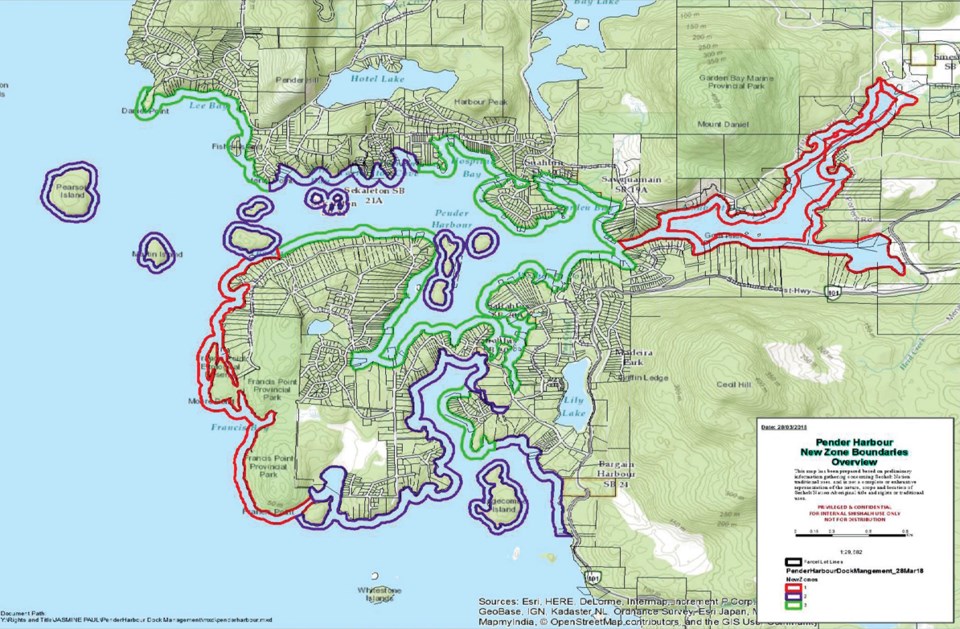The provincial government has released the new Pender Harbour dock management plan (DMP), opening the way for the end of a moratorium on new dock construction that’s been in place for more than a decade in some areas.
The province was forced to go back to the drawing board after strong opposition to the 2015 draft plan.
A review headed by former B.C. attorney general Barry Penner came out with 13 recommendations in 2016, including the completion of comprehensive archeological and environmental studies.
The joint shíshálh Nation, Ministry of Forests, Lands, Natural Resource Operations (FLNRO) plan released April 4 divides Pender Harbour into three zones instead of the four in the draft plan.
According to a release, “The Pender Harbour dock management plan aims to address environmental stewardship and resource management concerns by minimizing impacts to marine resources, protecting archeological resources from disturbance, and advancing collaborative management between the shíshálh Nation and the province.”
Zone 1, the area where no new docks will be allowed, remains unchanged from the original plan and covers Gunboat Bay and Oyster Bay and the western part of Francis Peninsula. The ministry also says existing unauthorized docks in Zone 1 will need to be removed.
Zone 2, which includes the south and east shores of Francis Peninsula, most of the islands around Pender Harbour and the area between Lee Bay and Hospital Bay, is restricted to “dock and boathouse applications … that can be shared by multiple parties or used for commercial purposes, and which are consistent with this DMP.”
Zone 3 will be open to all new applications as long as “the dock footprint does not impact/influence critical habitat or cultural resources.”
According to FLNRO, the archeological study looked at 66 sites and found 41 had “docks, marinas or other built structures, such as retaining walls, on the adjacent foreshore, most with the potential to negatively impact archeological materials.”
The study also found 12 of the 41 sites have been negatively impacted, while 29 “may be” negatively impacted, but need further study.
The ministry said the 321 dock owners who are hoping for replacement tenures will now be able to begin the application process, and ministry staff will be contacting them directly.
Frank Mauro, Pender Harbour’s director at the Sunshine Coast Regional District, said he’s pleased to see something definitive.
“They have added to the science behind [the DMP], which was a concern. As far as the restrictions, I’m sure some folks won’t be happy,” Mauro said, adding that he’s also glad to see the new plan doesn’t include a larger Zone 1.
“It would have been troublesome had that been expanded.”
Ministry staff were expected to meet with local stakeholders on Friday.
The dock management plan was already on the agenda for the Pender Harbour Advisory Council’s spring town hall, scheduled for May 6, before this week’s announcement.
It also came up during the council’s fall town hall last September, where shíshálh Nation chief Warren Paull struck a conciliatory tone.
“I’m here to tell you that the shíshálh Nation wants to work together with everyone. We’re not going to get everything we want, and not everybody else is going to get everything they want. But somewhere in there, there’s middle ground, and we look forward to finding that with you,” Paull told the packed house.



